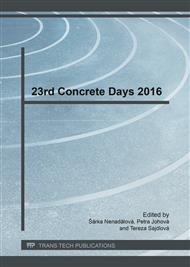p.203
p.209
p.215
p.221
p.227
p.232
p.238
p.244
p.249
Numerical Simulation on the Aerodynamic Characteristics Effect of Ribs Acting on the Cooling Tower
Abstract:
The experimental work deals with the modelling of flow around a two-dimensional model of an infinite cylinder in a trans-critical flow regime. Herein, there was used ANSYS Fluent and the turbulent model k-ε realizable for the calculation of the pressure distribution around the cylinder. This turbulence model belongs to Reynolds Averaged Navier-Stokes equations (RANS). The simulated numerical domain considered half of the cylinder with the diameter of 70 m, wind flow was set to 35 m.s-1, which resulting in the Reynolds number of Re = 1,68.108. In this study, meridional wind ribs were modelled physically. A parametric study was modelled with the different shape of ribs, ribs spacing and height. Simulated results were compared with experimentally ascertained data and guidelines.
Info:
Periodical:
Pages:
227-231
Citation:
Online since:
May 2017
Authors:
Price:
Сopyright:
© 2017 Trans Tech Publications Ltd. All Rights Reserved
Share:
Citation:


